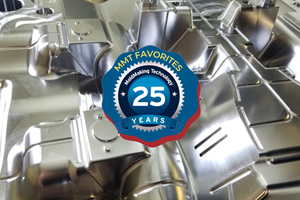Tips and Strategies for Expanding Your Business
The last few years have affected most small businesses tremendously, but the ones who managed to weather the storm are the ones who were able to adapt to all the major changes in the market.
Following are a few tips and strategies to apply in order to expand your business:
Select a Target Market
Stay focused on what you do best. Having a clear target will help you easily decide on all other aspects of your business—machines, man-power, supporting technology, marketing efforts, etc. If your target industries require it, make sure you obtain all the appropriate certifications, so you can meet the standards of even the most exigent of customers.
Choose Your Allies
Your network of friends and business contacts can be an extremely valuable source for information and leads. Talk to everybody you know about directing customers your way, ask for advice about best business practices, and develop strategic partnerships. Create word-of-mouth among your peers and use their connections and knowledge to expand your business.
Stand Out from the Crowd and Identify Lead Generation Sources
Make sure you are prepared to communicate your added value. Be ready to explain why you are a better choice than any of your competitors. Identify where you can generate sales leads for your business.
Adapt
The last few years have affected most small businesses tremendously, but the ones who managed to weather the storm are the ones who were able to adapt to all the major changes in the market. Understanding how demand evolves and being able to adjust to it, is vital and can help you land on your feet when other businesses fail.
Diversify Your Services
Accepting jobs outside of your core capabilities can be risky. However, if your current capabilities support growth in new directions, make sure you consider the possibility of diversifying. In some cases, changes in the market will force you to diversify. The easiest way to expand is to look at your existing range of services or products and see if you can go one step deeper into the manufacturing process.
Diversify Your Customer Base
Maintain a customer base that is relatively diverse in company size, geographical location, industry and volume, will make you less vulnerable.
Innovate
Industry leaders easily adopt new technologies, while followers fight to keep up, or fail. Something as easy as updating the software you are using, can make the difference between being competitive and profitable, and going out of business.
Streamline
Keeping a tight production schedule, prioritizing jobs and trying to become as independent as possible from outside suppliers, should help improve your output and create a more seamless workflow. This will also allow you to better estimate your future cash flow and identify specific aspects of your business that need improvement.
Be Flexible and Creative
Finding creative ways to use your equipment can help you save time and money. It's a great idea to invest in equipment that can incorporate secondary work in its primary function.
Grow Sustainably
Giant leaps of faith often prove to be more detrimental than beneficial, and can significantly hinder your business in the long term. Invest as you go and always make sure that every capital equipment purchase you make is cost-efficient. Consider all the collateral costs (training, new hires, etc.), and make sure you have the right sales and marketing strategy to keep your new technology/equipment busy. .
Maintain Visibility
Last but not least, make sure you have visibility. Regardless of how you approach the development of your business, make sure enough potential customers know about you. With more and more customers using the Internet to identify new suppliers, an online presence can help you get the exposure you need, and can direct customers your way without too much effort on your end.
Related Content
The Role of Social Media in Manufacturing
Charles Daniels CFO of Wepco Plastics shares insights on the role of social media in manufacturing, how to improve the “business” side of a small mold shop and continually developing culture.
Read MoreLeading Mold Manufacturers Share Best Practices for Improving Efficiency
Precise Tooling Solutions, X-Cell Tool and Mold, M&M Tool and Mold, Ameritech Die & Mold, and Cavalier Tool & Manufacturing, sit down for a fast-paced Q&A focused on strategies for improving efficiencies across their operations.
Read MoreThink Safety: Eliminate Hazards Throughout the Shop
The tooling community is taking advantage of new products for safer mold shops and molding facilities.
Read MoreMMT Chats: Solving Schedule and Capacity Challenges With ERP
For this MMT Chat, my guests hail from Omega Tool of Menomonee Falls, Wisconsin, who share their journey with using enterprise resource planning (ERP)—and their people—to solve their schedule and capacity load monitoring challenges.
Read MoreRead Next
How to Use Strategic Planning Tools, Data to Manage the Human Side of Business
Q&A with Marion Wells, MMT EAB member and founder of Human Asset Management.
Read MoreHow to Use Continuing Education to Remain Competitive in Moldmaking
Continued training helps moldmakers make tooling decisions and properly use the latest cutting tool to efficiently machine high-quality molds.
Read More














